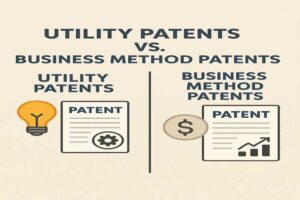Conceptualization is the phase during which the Entrepreneur writes his ideas on paper to identify the concepts that will later layout the foundations of his “Business Model”. He describes step by step the processus through which his project can generate an income.
He breaks the idea down into modules and then changes the settings in each module to improve it, to optimize it. He lists the arguments in favor of his concept.
Sample of Beginning of Conceptualization
I shall establish a bakery.
It will be composed of two departments: Production and Sales.
The unique sale proposal of this bakery will be that the only bread sold in it shall be organic, free of genetically modified organisms. The establishment will be opened only in the morning to limit expenses and to producee at low cost.
Business Model Identification
For each activity of the project that must be a center of profits, the whole processus of creation, of realization and of sales of the product or service must be described in detail.
Various products (bread, cakes and sandwiches) can relate to the same activity.
Nevertheless, a different distribution of the same product (Tea Room) can initiate a new activity and thus necessitate a new business model.
Inside of each business model, each source of revenue is identified to fix the Revenue Model.
Business Model Sample
We need to rent premises with 3 parts: Production, Sales at the counter and Tea Room, then to buy bakery equipment as well as organic flour necessary to make bread. We also need to hire a baker and a saleswoman. Then, each day, the baker will come at 4am and make bread for 8am then sold by the saleswoman from 8am to 1pm. So organic bread will enter into the local market.
Identification of Interlocutors or Actors
It is simply the main the main categories of natural or legal persons targeted by the concept. In the case of our organic bakery, there will be the consumer, the flour supplier, the baker, the saleswoman, the maid etc… For a long time, I have been using the word « interlocutors », based on the principle that these categories of persons would be the ones the future enterprise would talk to.
However, under the influence of my geek friends, it seems to me increasingly clear that the categories of persons to which the company “does not speak”, that is to say for which it will not develop a business case aimed at convincing them, still play an important role, while the definition of the word interlocutor does not suit them.
Therefore, in the future, I will speak of actors. However, the word interlocutors will continue to exist firstly to ensure compatibility with my earlier writings and also to designate the subset of actors with whom the concept (or future business) “speaks”.
Type Interlocutors
The Entrepreneur lists all arguments in favor of the concept and identifies each type interlocutor that the concept targets. Identification of the type interlocutors is an essential part of the conceptualization phase.
Later indeed, for each interlocutor from this list, the Entrepreneur will prepare a pitch. Each interlocutor has its profile, needs, desires and fears. This is why a different pitch should be developed for each interlocutor.
The same argument can surely be used for different interlocutors and therefore in different pitches but be careful in one essential point: the order of presentation of the arguments.
An old New York lawyer expressed it a little poetic but very explicitly: “go for the jugular! “. In other words, for each interlocutor, the main argument to convince him to be given first.
Conclusion
Conceptualisation is both an evolutive and iterative process. In other words, as you ripen your idea, you need to change your conceptualization, meaning start your conceptualization as many times as necessary. Remember that on this fundamental reflection depends directly the success of your concept or of your future business.
A decision taken almost inadvertently may have surprising consequences on the future.







